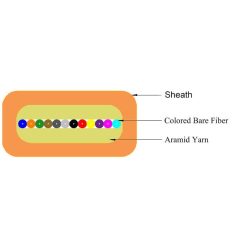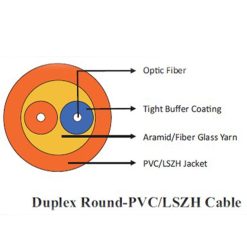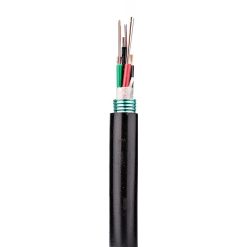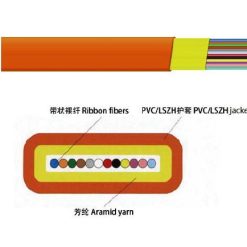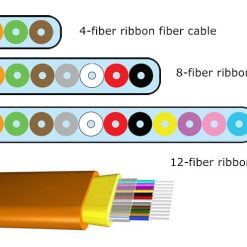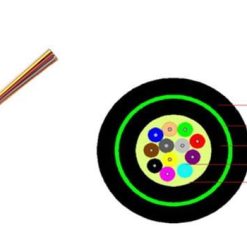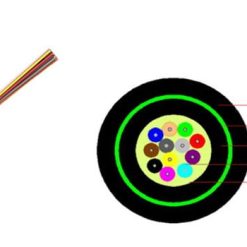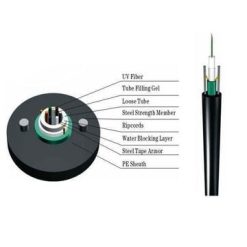Fiber optic cables are cables that contain one or more optical fibers, which are thin strands of glass or plastic that can transmit light signals over long distances. Fiber optic cables are used in telecommunications, data communications, and other applications where high-speed, high-bandwidth data transmission is required.
There are several different types of fiber optic cables, including:
1. Single-mode fiber: This type of fiber optic cable has a small core diameter (typically 9 microns) and is designed to transmit a single mode of light. Single-mode fiber is used for long-distance, high-bandwidth applications such as telecommunications and long-haul data transmission.
2. Multimode fiber: This type of fiber optic cable has a larger core diameter (typically 50 or 62.5 microns) and is designed to transmit multiple modes of light. Multimode fiber is used for shorter-distance, lower-bandwidth applications such as data center and local area network (LAN) communication.
3. Loose-tube fiber: This type of fiber optic cable has a protective outer jacket and contains multiple optical fibers that are loosely contained within a central tube. Loose-tube fiber is commonly used in outdoor applications where the cable may be exposed to moisture or temperature changes.
4. Tight-buffered fiber: This type of fiber optic cable has a protective outer jacket and contains one or more optical fibers that are tightly buffered with a protective coating. Tight-buffered fiber is commonly used in indoor applications where the cable may be subject to bending or other stress.
5. Ribbon fiber: This type of fiber optic cable contains multiple optical fibers that are arranged in a flat ribbon configuration. Ribbon fiber is commonly used in high-density applications such as data centers.
6. Armored fiber: This type of fiber optic cable has a protective outer jacket and also contains a layer of metal armor for additional protection against physical damage. Armored fiber is commonly used in industrial or military applications.
In addition to these types, there are also specialized fiber optic cables that are designed for specific applications or environments. For example, there are cables that are designed for underwater use, as well as cables that are designed for use in hazardous environments where there may be a risk of explosion or fire.
Indoor and outdoor fiber optic cables differ in their construction and design, which makes them suitable for different environments and applications. Here are some of the common types of indoor and outdoor fiber optic cables:
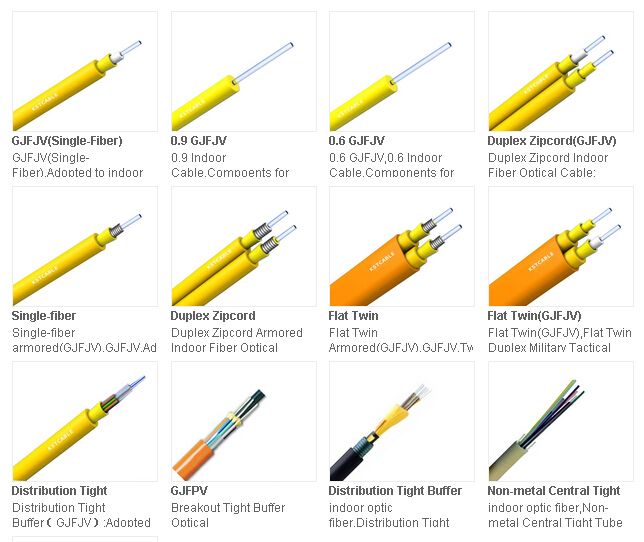
Indoor fiber optic cables:
- Tight-buffered cables: These are the most common type of indoor fiber optic cables. They have a tight buffer coating around each fiber, which makes them more flexible and easier to handle. They are typically used for shorter distances, such as within a building or a data center.
- Distribution cables: These cables contain several tight-buffered fibers bundled together under a single jacket. They are used for longer distances than tight-buffered cables and are typically used to connect different parts of a building or campus.
- Breakout cables: These cables have several tight-buffered fibers bundled together under a single jacket, with each fiber having its own individual tight buffer coating. They are used for high-density applications, such as connecting equipment in a server room.
Outdoor fiber optic cables:
- Loose-tube cables: These are the most common type of outdoor fiber optic cables. They have a central tube that holds several fibers, which are not tightly bound to the tube. This design allows for flexibility and protection against moisture and temperature changes.
- Ribbon cables: These cables contain several fibers arranged in a flat ribbon configuration. They are used for high-density applications, such as long-distance telecommunications.
- Armored cables: These cables have an additional layer of metal armor for extra protection against physical damage. They are used in harsh environments, such as underground or aerial installations.
- Composite cables: These cables contain both indoor and outdoor cables within a single jacket. They are used to connect buildings or different parts of a campus.
In summary, indoor and outdoor fiber optic cables have different designs and constructions that make them suitable for different environments and applications. Indoor cables are typically tighter buffered and used for shorter distances, while outdoor cables are more rugged and designed for longer distances and harsher environments.

